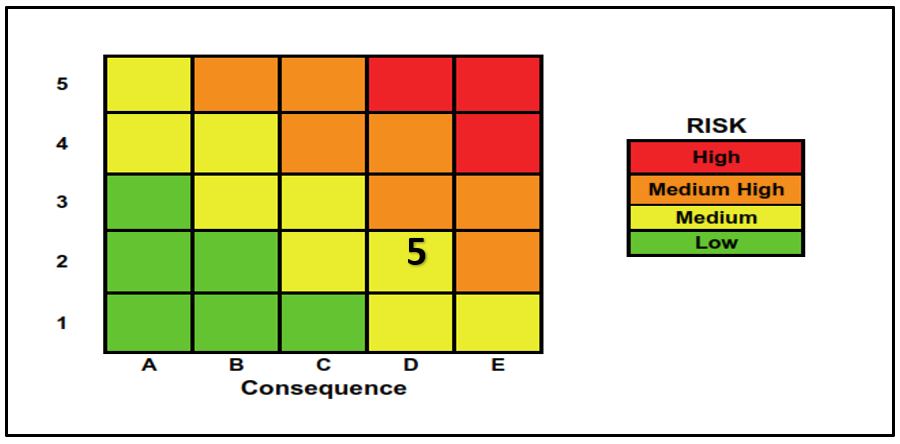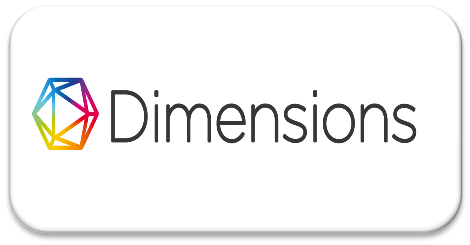The Risk Identification On 3" GL BO3-52520 Process Pipelines Using a Risk-Based Inspection Method
Abstract
The oil and gas industry can contribute significantly to sustainable development by mitigating negative environmental impacts, such as equipment failure. Numerous pipeline failures have occurred due to the dramatic expansion of the oil and gas product distribution pipeline network, which is a significant factor in the offshore gas pipeline network's failure. In general, compared to other equipment types in the industry, planning inspections presents more challenges. Due to a lack of jurisdictional requirements regarding inspection intervals and piping methods. This research aims to ensure the reliability by conducting a risk assessment of the likelihood and consequences of equipment failure, mitigating the impact of that risk, and developing a more optimal inspection plan. This study is focused on API Class 5L Pipe 3" GL BO3-52520. The Routine Inspection Technique (RBI) was implemented in 2016 following the API 581 standard. This semi-quantitative approach is built based on operational data and validated inspection results. According to the risk assessment, the pipeline will have a Medium risk level, with metal losses occurring in each segment. Four years after the risk-based inspection assessment, the recommended inspection plan for gas pipelines is four years.
References
Aven, T., & Renn, O. (2009). On risk defined as an event where the outcome is uncertain. Journal of Risk Research, 12(1), 1–11.https://doi.org/10.1080/13669870802488883
Calixto, E. (2013). Gas and Oil Reliability Engineering. Modeling and analysis,17(8). https://doi.org/10.1016/C2011-0-69838-2
Noori, S. A., & Price, J. W. H. (2006). A risk approach to the management of boiler tube thinning. Nuclear Engineering and Design, 236(4), 405- 414 https://doi.org/10.1016/j.nucengdes.2005.09.019
American Petroleum Institutes (API). (2016). Risk-Based Inspection Methodology. American Petroleum Institute, 3rd Ed.
Sasikirono, B., Kim, S. J., Haryadi, G. D., & Huda, A. (2017). Risk Analysis using Corrosion Rate Parameter on Gas Transmission Pipeline. IOP Conference Series: Materials Science and Engineering, 202(1). https://doi.org/10.1088/1757-899X/202/1/012099
Giffari, A. (2020). Analysis of Inspection Scheduling on Free Spanning Subsea Pipeline Using Risk Based Inspection ( RBI ) Method. International Journal of Offshore and Coastal Engineering, 4(1), 9–16.
Hameed, H., Bai, Y., & Ali, L. (2021). A risk-based inspection planning methodology for integrity management of subsea oil and gas pipelines. Ships and Offshore Structures, 16(7), 687–699. https://doi.org/10.1080/17445302.2020.1747751
Perera, I. E., Sapko, M. J., Harris, M. L., Zlochower, I. A., & Weiss, E. S. (2016). Design and development of a dust dispersion chamber to quantify the dispersibility of rock dust. Journal of Loss Prevention in the Process Industries, 39, 7–16. https://doi.org/10.1016/j.jlp.2015.11.002
Seo, J. K., Cui, Y., Mohd, M. H., Ha, Y. C., Kim, B. J., & Paik, J. K. (2015). A risk-based inspection planning method for corroded subsea pipelines. Ocean Engineering, 109, 539–552. https://doi.org/10.1016/j.oceaneng.2015.07.066
Martikainen, P., Suominen, a, & Mit, T. (1999). Validity of the Landau-Zener model for output coupling of Bose condensates. Physical Review A (Vol. 60).
Lucky A. Malik, Johny W. Soedarsono, M. Yudim.S, Rini Riastuti, H. P. (2020). Risk Based Inspection of Corroded Gas Pipelines. International Journal of Mechanical and Production Engineering,(10), 1–4.
Lubis, M. O. Z. A., Widodo, A., & Haryadi, G. D. (2020). Risk Assessment of Gas Pipeline using Risk based Inpection and Fault Tree Analysis. Proceedings of the 7th Engineering International Conference on Education, Concept and Application on Green Technology (Eic 2018), 43–47. https://doi.org/10.5220/0009006100430047
Zhang, M., Liang, W., Qiu, Z., & Lin, Y. (2017). Application of Risk-Based Inspection method for gas compressor station. Journal of Physics: Conference Series, 842(1). https://doi.org/10.1088/1742-6596/842/1/012064.
Mediansyah, Haryadi, G. D., Ismail, R., & Kim, S. J. (2017). Risk Analysis of Central Java Gas Transmission Pipeline by Risk-Based Inspection Method. IOP Conference Series: Materials Science and Engineering, 202(1). https://doi.org/10.1088/1757-899X/202/1/012094
Eskandarzade, M., Chandima Ratnayake, R. M., & Najafi Ershadi, M. (2020). Mechanization of qualitative risk based inspection analysis. IEEE International Conference on Industrial Engineering and Engineering Management, 2020-December, 401–406. https://doi.org/10.1109/IEEM45057.2020.9309754
obin, M., & Purnomo, H. (2018). Risk Level Assessment of Pipelines using a Combination of Analytical Network Process and Risk Based Inspection Methods. International Journal of Industrial Engineering, 5(3), 19–27. https://doi.org/10.14445/23499362/ijie-v5i3p104
Febriyana, P., Haryadi, G. D., Widodo, A., Tauviqirrahman, M., Suprihanto, A., Adigama, A. S., … Kim, S. J. (2019). Evaluation for detecting and monitoring of offshore pipeline damage based on risk based inspection method. AIP Conference Proceedings, 2097(April). https://doi.org/10.1063/1.5098261
Prabowo, R. L., Husodo, A. W., & Arumsari, N. (2018). Penilaian Risiko pada Onshore Pipeline Menggunakan Metode Risk Based Inspection ( RBI ). Proceeding 3rd Conference of Piping Engineering and Its Application, 3 No.1, 127–132.
American Petroleum Institute. 2016. Risk Base Inspection Methodology API Recommended Practice 580 Third Edition. Washington, DC: API Publishing Services.
Siswantoro, N., Priyanta, D., Zaman, M. B., Semin, Andaka, P. S., & Busse, W. (2021). Risk analysis of scrubber vessel using risk-based inspection method in geothermal power plant. IOP Conference Series: Earth and Environmental Science, 649(1). https://doi.org/10.1088/1755-1315/649/1/012016

Copyright (c) 2022 Angga Pratama Putra, Johny Wahyuadi Soedarsono, Azizah Intan Pangesty, Muhammad Ibkar Yusran asfar, Aprizal Aprizal, Romal Ramadhan (Author)

This work is licensed under a Creative Commons Attribution 4.0 International License.






